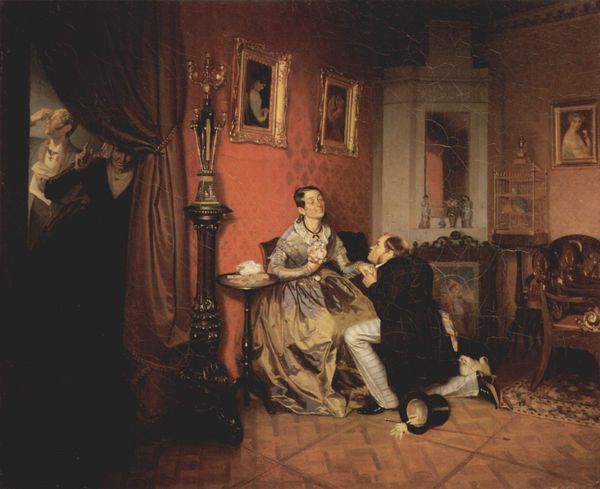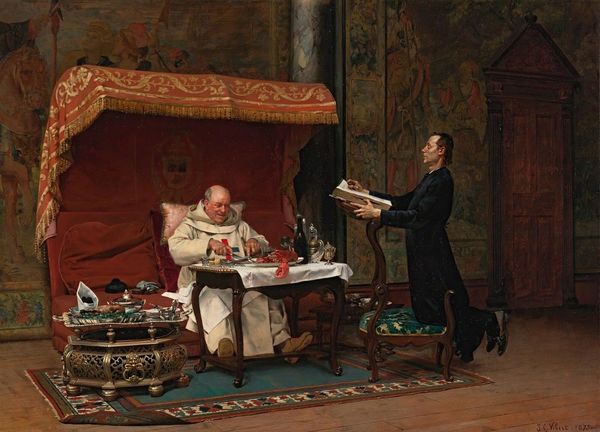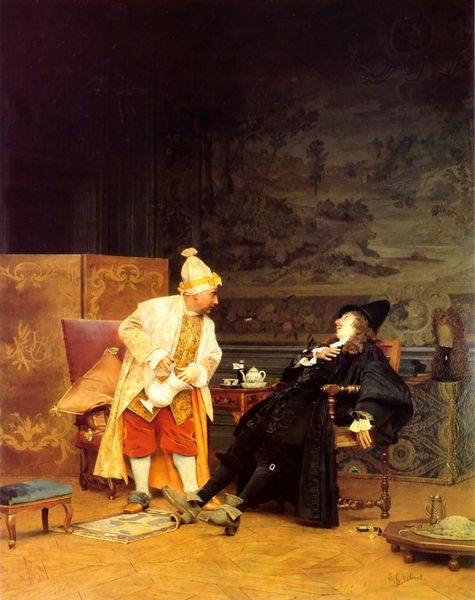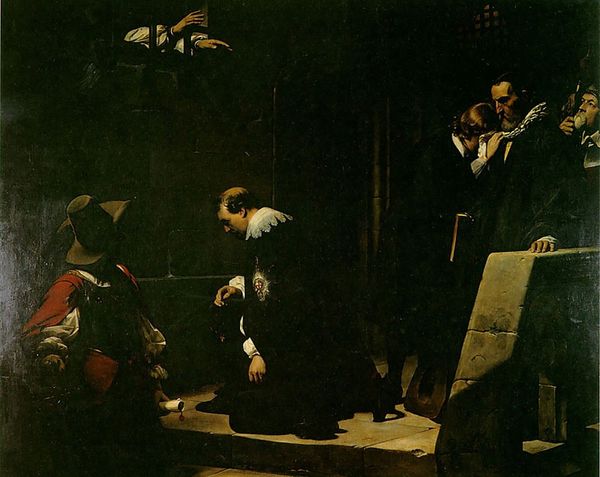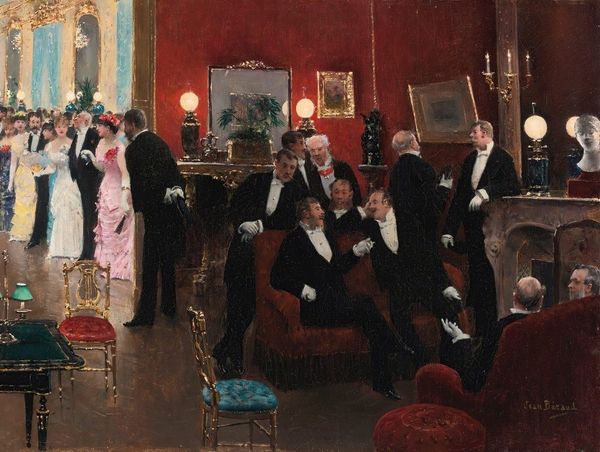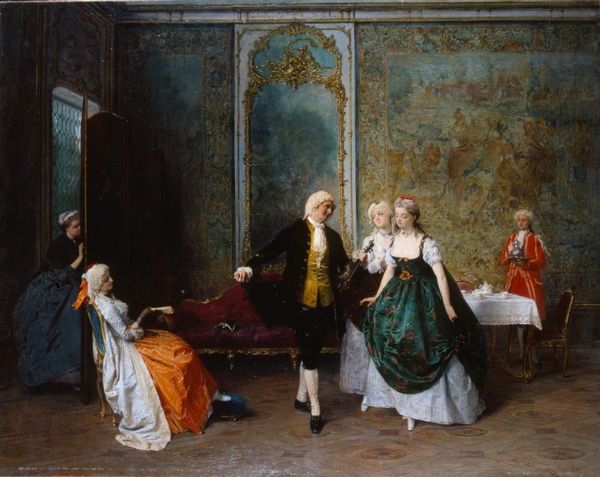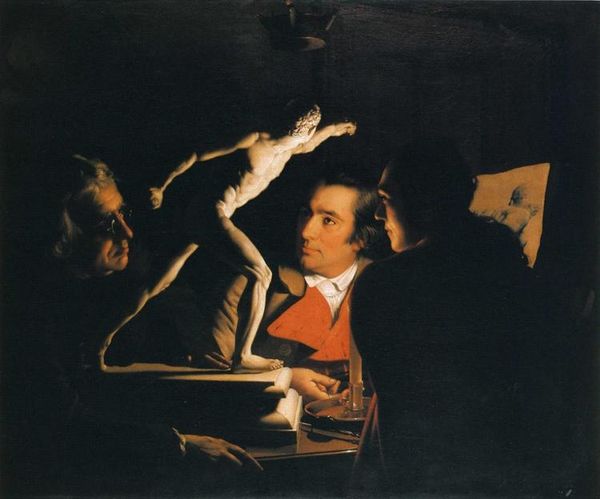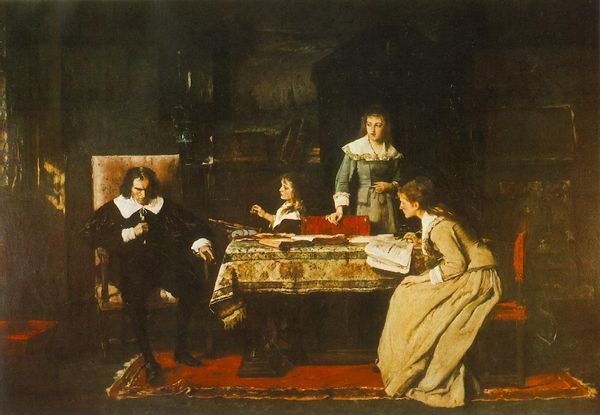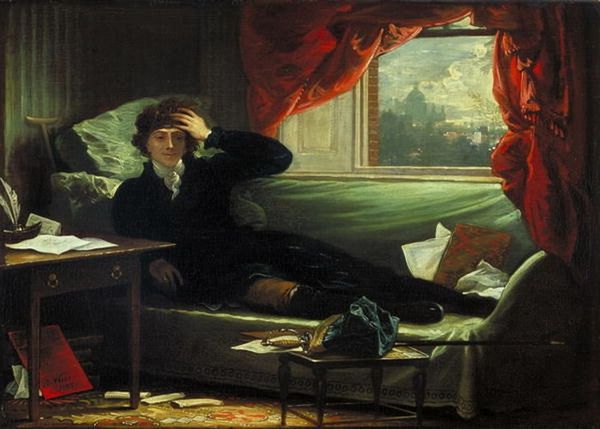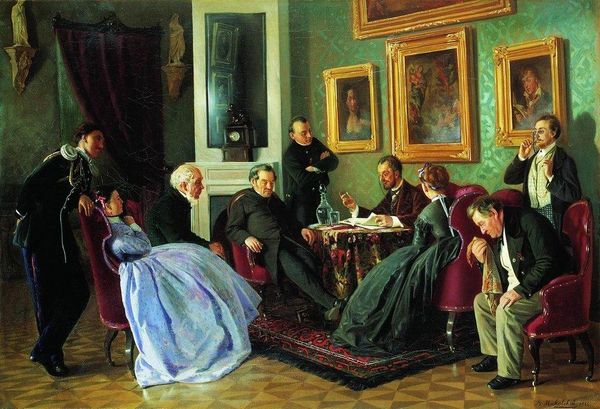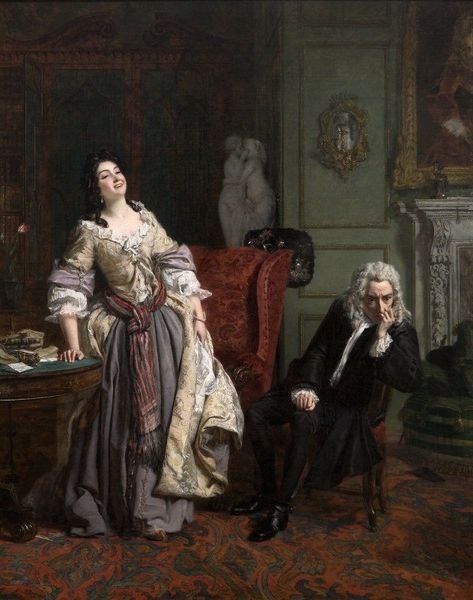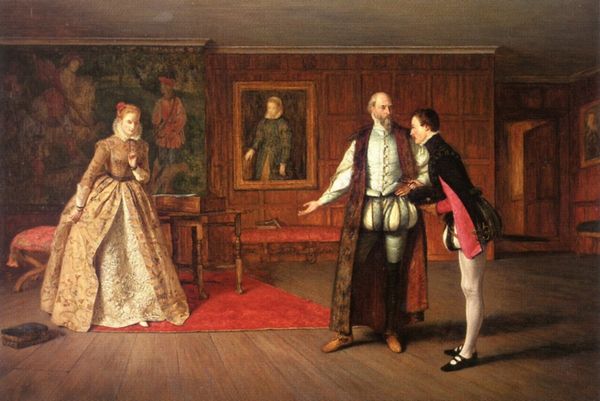
painting, oil-paint
#
portrait
#
narrative-art
#
painting
#
oil-paint
#
figuration
#
romanticism
#
chiaroscuro
#
history-painting
#
academic-art
Copyright: Public Domain: Artvee
Editor: Here we have Johann Peter Krafft's "Manfreds Sterbestunde" from 1825, rendered in oil paint. I’m struck by the dramatic contrast between the illuminated apparition and the somber figures – it feels almost theatrical. What’s your take on it? Curator: It's definitely theatrical, isn't it? Krafft stages a scene ripe with Romantic pathos. This work exemplifies how artists in the 19th century grappled with themes of spirituality and inner turmoil. Consider the literary source – Lord Byron's "Manfred." This wasn't just illustration; it was about tapping into Byron's cultural capital, and feeding a contemporary appetite for narratives of tortured genius. Editor: So, it’s not just about depicting a scene, but engaging with Byron's image and fame? Curator: Precisely. And the setting, a gothic archway looking onto mountains, plays into that era's obsession with sublime nature. It asks: who controls the narrative here? Is it the church figure attempting to guide Manfred, or the ghost itself, a projection of Manfred’s inner demons and authorial control over the scene? Editor: That's interesting; the cultural context really shapes the meaning. I initially saw just a dramatic death scene, but you’re highlighting the power dynamics embedded within the artwork and the influence of literary fame. Curator: Yes. Consider how museums and galleries actively curated such displays of Romantic angst. These weren't simply artistic expressions; they were performances meant to elicit specific emotional and ideological responses. What do you make of the man in the image reaching to the vision in the painting? Editor: Now I notice, in that pose, his agency, and the vision seems more like his reflection of a deep feeling. I appreciate seeing how cultural narratives become entwined with the artistic interpretation. Curator: Exactly, and it’s the power of that intersection, of art reflecting and shaping cultural perception, that truly resonates. Editor: Thanks, seeing art as part of that historical conversation definitely gives me a broader understanding.
Comments
No comments
Be the first to comment and join the conversation on the ultimate creative platform.
